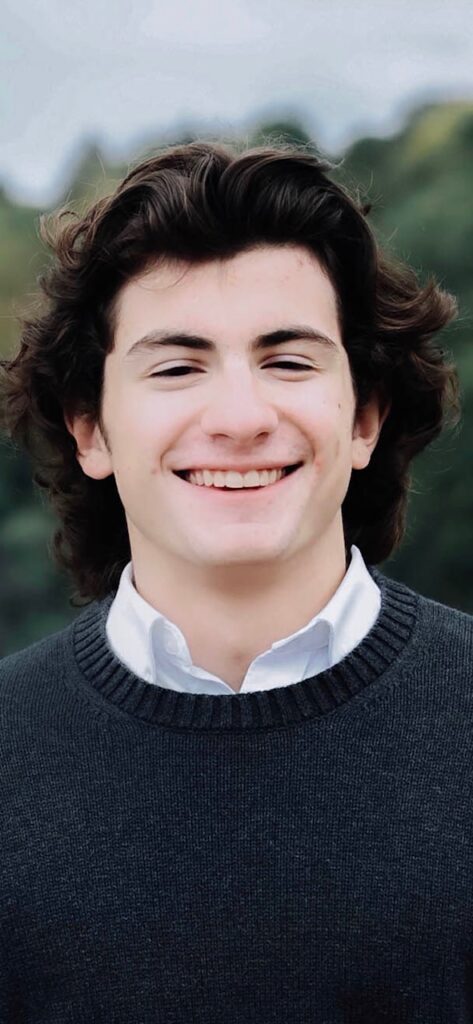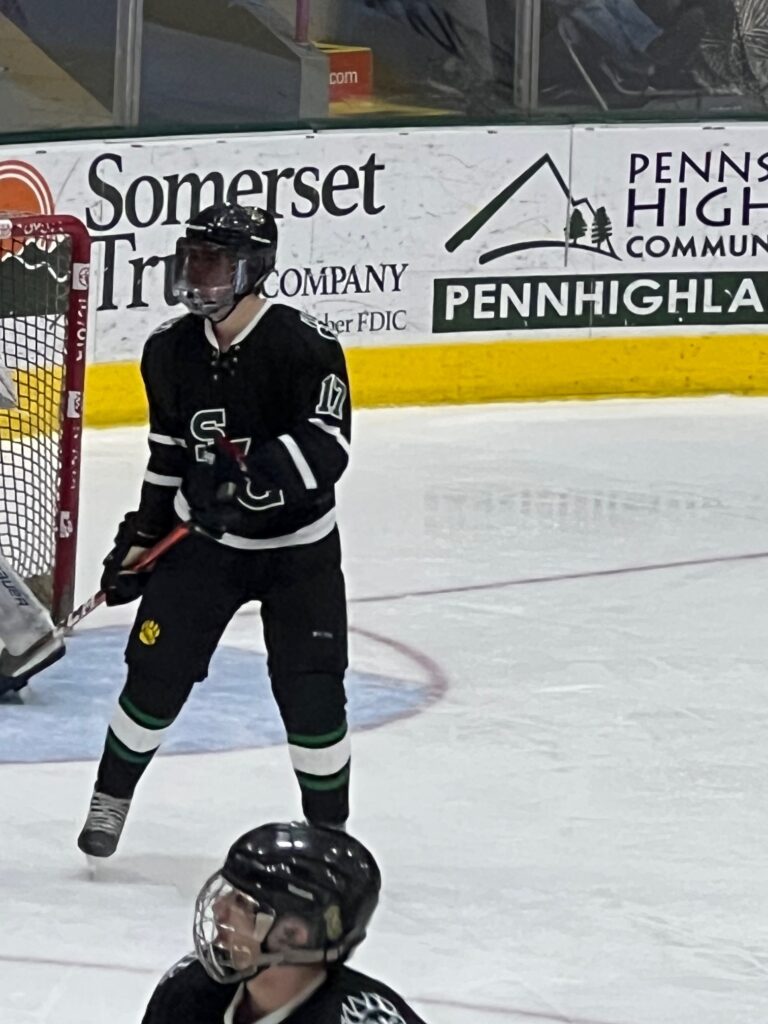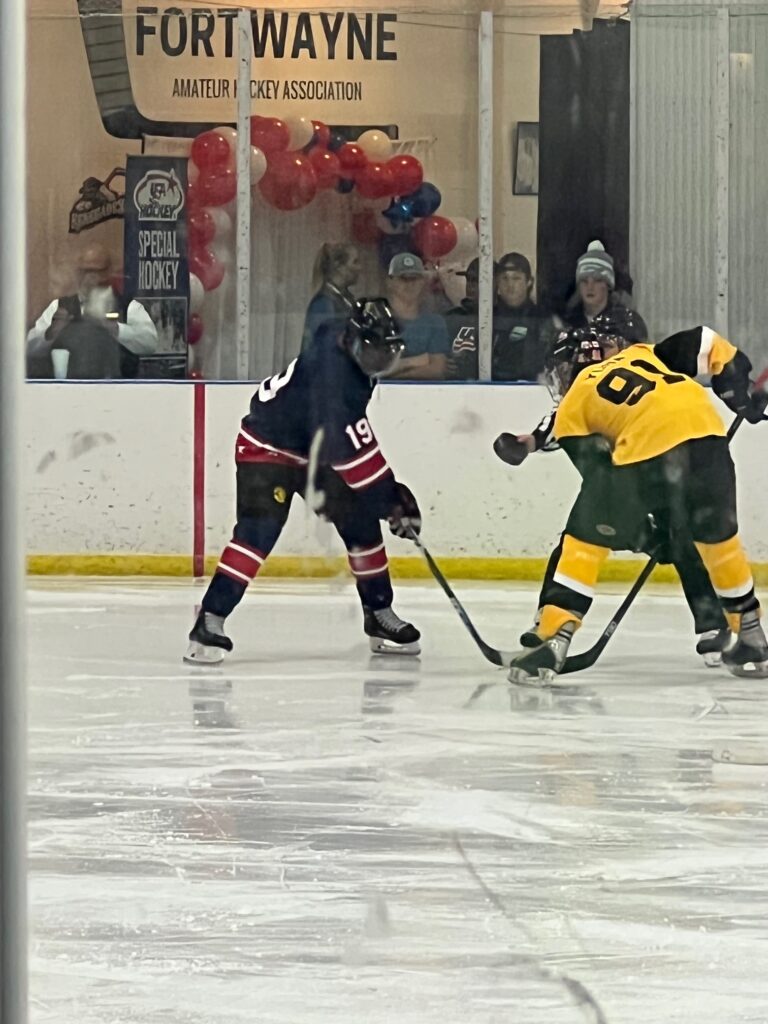The visually impaired Pennsylvania native shares his experiences playing both blind and regular hockey, making the U.S. Blind Hockey Team and skating with an NHL legend.

About 46 miles northeast of Pittsburgh lies the borough of Indiana, Pennsylvania. The area is known for its many Christmas tree farms, earning the unofficial distinction as the Christmas Tree Capital.
It’s also where Anthony Ashbaugh was born and raised. Ashbaugh, a 19-year-old freshman at Saint Vincent College in Latrobe, loved being outdoors hunting, riding his bike and other activities many kids enjoy.
There was just one problem. Ashbaugh was born with an eye condition called Achromatopsia, which causes a lack of color vision. It also made his eyes extremely sensitive to light.
“It sucked to be outside because of light sensitivity,” recalled Ashbaugh, who now resides in Clarksburg.
But neither Ashbaugh nor his parents, Rick and Angel, allowed his condition to define who he is. With an acuity of 20/200, he is just over the minimum that is considered legally blind. Other than having to hold books or papers closer to his face, he grew up in much the same manner as a regular kid.
“(My parents) never held me back from anything. If I wanted to do something, they’d let me do it. The best way I was going to learn was to do something. No matter what it was, they were like, ‘give it a try, see what happens’.”
Ashbaugh began watching hockey games with his father at an early age. Growing up in Pennsylvania, he became a fan of the Pittsburgh Penguins, but didn’t begin learning to skate until age 10. His parents enrolled him in a Learn to Play program, which teaches the basics of skating and stickhandling. He improved steadily, eventually playing at the U18 level before joining the team at Saint Vincent as a right winger.
It didn’t take long for Ashbaugh to realize he was good at the sport.

“I learned to skate for about a week and I was like, ‘OK, I can do this on my own’. The in-house stuff, I definitely benefited from that.”
When he was 12, Ashbaugh discovered blind hockey through one of his teachers. He began practicing with a team sponsored by the Penguins, now known as the Pittsburgh Rhinos. He competed in numerous tournaments in Tampa, St. Louis and Canada. Shortly after the team changed management and became the Rhinos, Ashbaugh decided to strike out on his own and enter tournaments as an independent.
Playing regular hockey allowed Ashbaugh to adjust quickly to blind hockey.

It was different, a lot slower pace than sighted hockey. I could actually see the puck. It’s a lot bigger and heavier. I just had to get used to that. After a while, you can’t really tell a difference.
While playing for the blind hockey team sponsored by the Penguins, Ashbaugh had the opportunity to skate with NHL legend and Penguins star Sidney Crosby. Prior to a preseason game in 2019, Ashbaugh skated out to the blue line and stood next to Crosby during the national anthem. It was an unforgettable experience for a lifelong Penguins fan like Ashbaugh.
“It was cool. (The conversation) was pretty simple: How you doing? Where are you from? How do you like hockey?”
While playing as an independent, Ashbaugh caught the attention of scouts for the U.S. Blind Hockey team. Ashbaugh, who was playing in the highest division, was invited to a Team USA camp in Indianapolis where he played over a weekend. He was selected to the team during the 2022 season.
“I was in the car coming back from an 18U game. I got an email, and I was like, ‘hey dad, here’s the list, read it to me’. I was the first name on there.”
Last fall, Ashbaugh took part in the Blind Hockey Classic in Fort Wayne, Indiana, including a three-game series with the Canadian Blind Hockey team. The Canadians swept all three games, but Ashbaugh enjoyed the fast-paced level of play.
“It was the fastest level of blind hockey I’ve ever played. It reminded me a lot of sighted hockey, how quick it was. It was more competitive than the other tournaments I was in.”
Blind hockey didn’t become popular in the United States until 2014 after getting started in Canada during the 1970’s. While the Canadians have a clear advantage in experience, Ashbaugh believes the U.S. is making great strides in the sport.
Some of those guys (in Canada) played elite level hockey and lost their vision. The U.S. guys lost their vision and needed an outlet, so they turned to hockey. They’ve got some good players, but we’ve got good players too. Spreading the sport in America is a big thing, getting more kids playing and all these NHL teams are sponsoring these foundations to get blind kids into the sport.
Last summer, Ashbaugh’s mother came across the Foreseeable Future Foundation and passed on the information to her son. After filling out an application, he was accepted as a grant recipient. The funds are being used to pay for travel expenses and acquiring additional hockey gear.
“I’m very appreciative. It’s very beneficial. With blind hockey, it’s taking people all over the United States, and we have to meet in central locations. Travel can be expensive.”
Ashbaugh is looking forward to competing in another series against Canada in Toronto, as well as other tournaments. He’s committed to getting better both as a blind hockey player and for his Saint Vincent team, which lost in the American Collegiate Hockey Association (ACHA) finals this past season.
Blind hockey has taught Ashbaugh a lot about forming a sense of community with other blind and visually impaired people.
“You get to see all these different people live different lives. The way they deal with their vision is very interesting, how different they live compared to you.”

